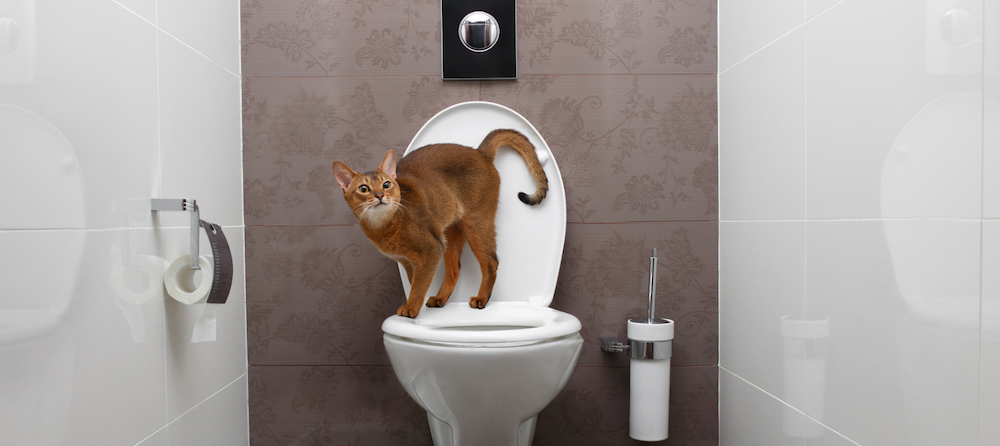The Risks of Flushing Cat Poop in Your Toilet - Preventive Steps
Click HereThey are making a number of good observations on the subject of Don’t flush cat feces down the toilet overall in the article following next.

Introduction
As pet cat owners, it's essential to be mindful of exactly how we dispose of our feline buddies' waste. While it might seem convenient to flush pet cat poop down the commode, this method can have destructive consequences for both the atmosphere and human health and wellness.
Environmental Impact
Purging feline poop introduces harmful microorganisms and bloodsuckers right into the supply of water, presenting a substantial risk to aquatic environments. These contaminants can negatively affect marine life and compromise water high quality.
Wellness Risks
Along with ecological problems, flushing cat waste can likewise posture wellness threats to human beings. Pet cat feces might have Toxoplasma gondii, a bloodsucker that can create toxoplasmosis-- a potentially serious disease, particularly for expecting ladies and individuals with weakened body immune systems.
Alternatives to Flushing
Luckily, there are much safer and more liable methods to dispose of feline poop. Think about the adhering to choices:
1. Scoop and Dispose in Trash
The most usual approach of getting rid of feline poop is to scoop it into a biodegradable bag and toss it in the garbage. Make sure to make use of a committed clutter scoop and dispose of the waste promptly.
2. Use Biodegradable Litter
Select naturally degradable pet cat litter made from materials such as corn or wheat. These clutters are environmentally friendly and can be securely taken care of in the trash.
3. Bury in the Yard
If you have a backyard, consider burying feline waste in a marked location away from vegetable gardens and water resources. Make certain to dig deep adequate to prevent contamination of groundwater.
4. Install a Pet Waste Disposal System
Purchase a family pet garbage disposal system especially made for pet cat waste. These systems make use of enzymes to break down the waste, reducing smell and ecological influence.
Verdict
Liable pet dog possession prolongs beyond offering food and shelter-- it also entails correct waste administration. By refraining from flushing pet cat poop down the bathroom and choosing alternative disposal approaches, we can decrease our environmental footprint and shield human health and wellness.
Why Can’t I Flush Cat Poop?
It Spreads a Parasite
Cats are frequently infected with a parasite called toxoplasma gondii. The parasite causes an infection called toxoplasmosis. It is usually harmless to cats. The parasite only uses cat poop as a host for its eggs. Otherwise, the cat’s immune system usually keeps the infection at low enough levels to maintain its own health. But it does not stop the develop of eggs. These eggs are tiny and surprisingly tough. They may survive for a year before they begin to grow. But that’s the problem.
Our wastewater system is not designed to deal with toxoplasmosis eggs. Instead, most eggs will flush from your toilet into sewers and wastewater management plants. After the sewage is treated for many other harmful things in it, it is typically released into local rivers, lakes, or oceans. Here, the toxoplasmosis eggs can find new hosts, including starfish, crabs, otters, and many other wildlife. For many, this is a significant risk to their health. Toxoplasmosis can also end up infecting water sources that are important for agriculture, which means our deer, pigs, and sheep can get infected too.
Is There Risk to Humans?
There can be a risk to human life from flushing cat poop down the toilet. If you do so, the parasites from your cat’s poop can end up in shellfish, game animals, or livestock. If this meat is then served raw or undercooked, the people who eat it can get sick.
In fact, according to the CDC, 40 million people in the United States are infected with toxoplasma gondii. They get it from exposure to infected seafood, or from some kind of cat poop contamination, like drinking from a stream that is contaminated or touching anything that has come into contact with cat poop. That includes just cleaning a cat litter box.
Most people who get infected with these parasites will not develop any symptoms. However, for pregnant women or for those with compromised immune systems, the parasite can cause severe health problems.
How to Handle Cat Poop
The best way to handle cat poop is actually to clean the box more often. The eggs that the parasite sheds will not become active until one to five days after the cat poops. That means that if you clean daily, you’re much less likely to come into direct contact with infectious eggs.
That said, always dispose of cat poop in the garbage and not down the toilet. Wash your hands before and after you clean the litter box, and bring the bag of poop right outside to your garbage bins.
https://trenchlesssolutionsusa.com/why-cant-i-flush-cat-poop/

I am just very curious about How to Dispose of Cat Poop and Litter Without Plastic Bags and I am praying you enjoyed reading the new post. If you please take the opportunity to distribute this write-up if you appreciated it. Bless you for your time. Visit us again soon.
Browse Our Site